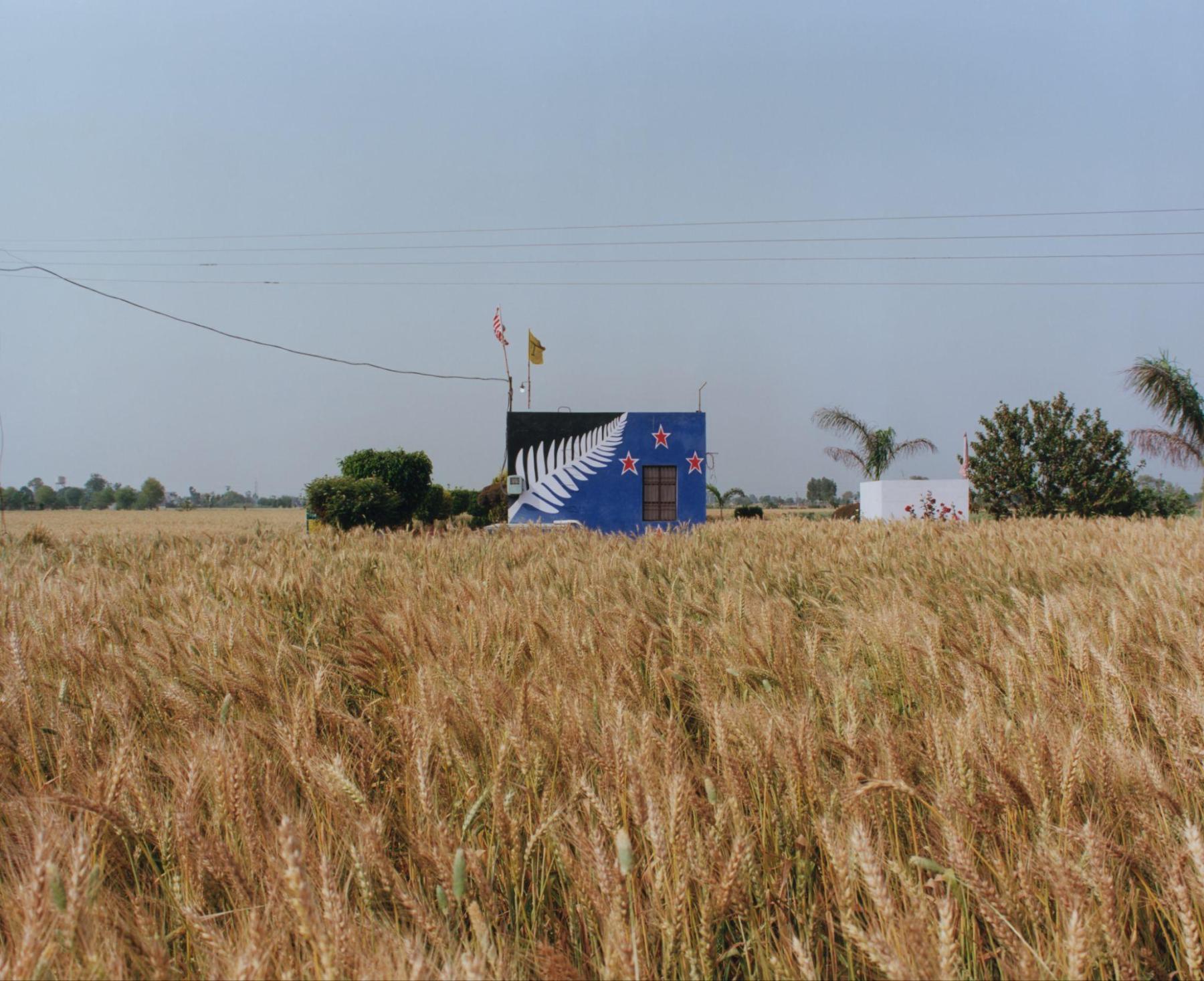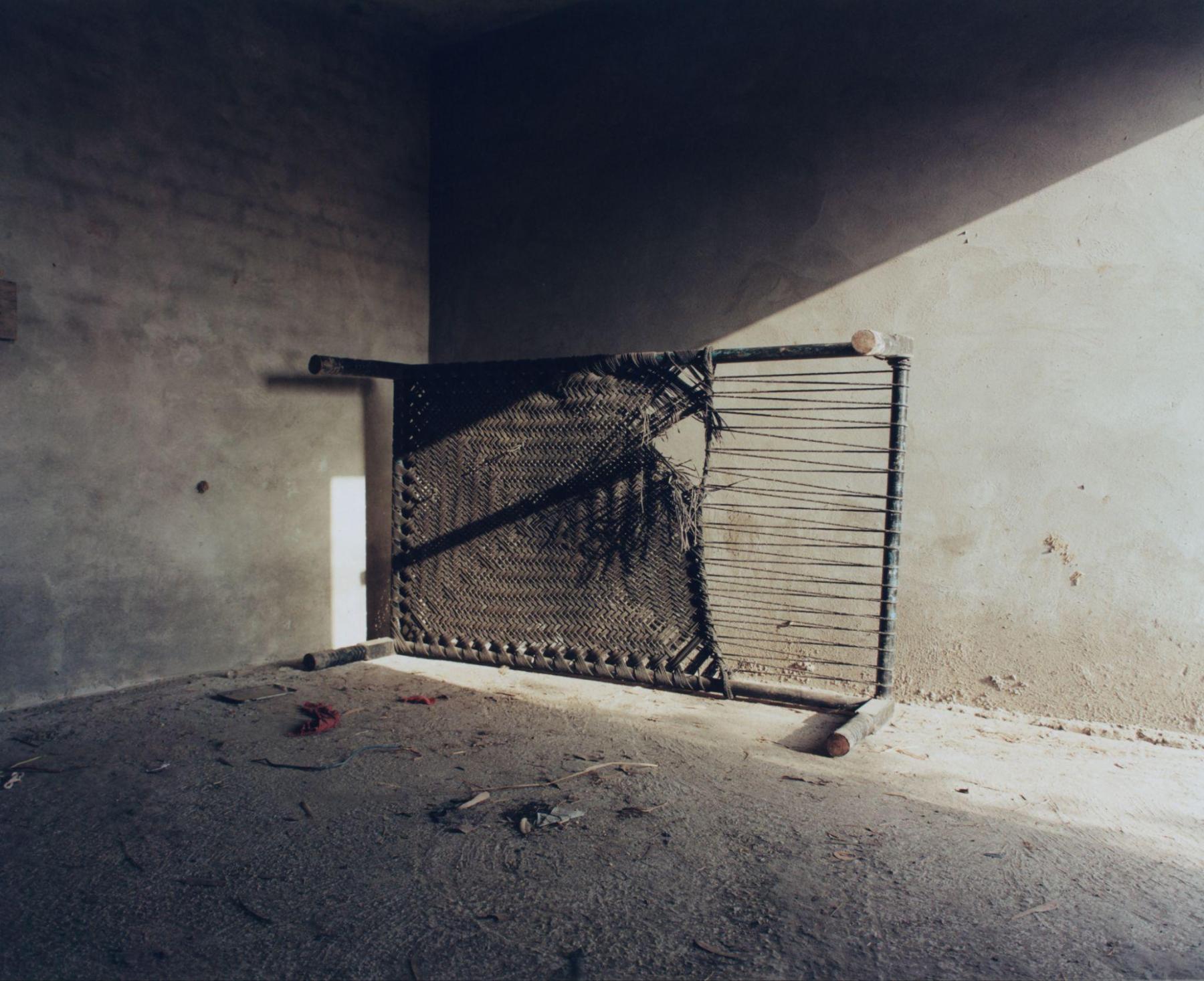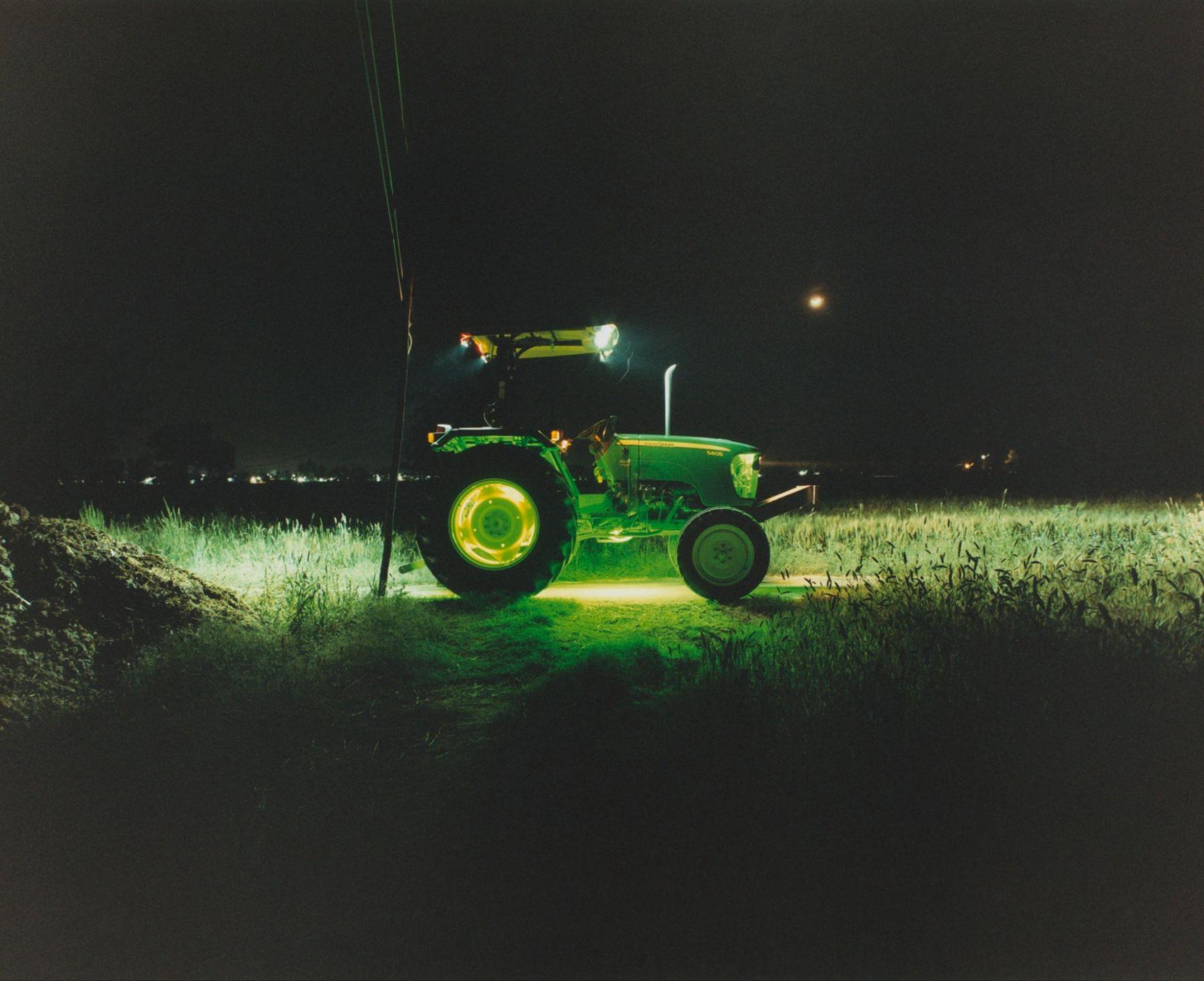Flags of Our (Migrating) Fathers: Fields of Punjab, Aflutter
Shashank Peshawaria’s photographs—like cinematic backdrops and mirages—stand apart as disquieting totems. Intriguingly magnetic, the fields of Punjab exude an undeniable aura of calmness. We are ushered into Elysium, letting us move closer towards a land of better opportunities. These images, however, are not merely Vincent van Gogh’s exuberant Wheat Field with Cypresses; Peshawaria’s visuality is esoteric, filling us with a sense of eerie stillness and deathly abandonment that feels closer to Andrew Wyeth’s Christina’s World. As we are absorbed into a radiant landscape, all that remains is a countryside dotted with freshly painted facades of different flags and structures that seem hypnotically inviting yet forbiddingly distant. Encountering a painted Union Jack randomly in a field in Punjab sounds peculiarly whimsical to be true—but as Peshawaria explained in a conversation with the writer, it is neither funny nor entirely arbitrary.

Untitled (Archival pigment print, 57 × 70 centimetres).
Fields Aflutter (2021–present), Peshawaria’s documentary interrogation of Punjab’s agrarian landscape, makes one thing abundantly clear from the beginning: there is nobody present to greet us in these photographs, for all those who lived here have left. We find ourselves staring at an outlandish moment frozen in time, a material memory that contains traces of promises and aspirations—of great patterns of migration towards North America, Europe and elsewhere. We are made aware of the intimacies and anxieties that have transformed these buildings into beacons of remembrance and hope. It is a dedication, a public affirmation of life settled elsewhere (for good). These photographs, however, are also an intimation; they ask, “If everyone has left, why are we still lingering here?”

Untitled (Archival pigment print, 101.75 × 125 centimetres).
There is a delicate solemnity in the images of solitary fields, often flanked with singular structures, featuring the painted flag of one of many Western countries. It is an anodyne environment that is meant to be viewed personally and intimately. The photographs introduce an inescapable punctum—the continuous expanse of farmlands leaves us in a trance where all formal elements converge (with slight unease) to an Archimedean point. This is a moment outside time, escaping the hubbub of our everyday mundanity. From this perspective, we locate Peshawaria’s photographs and its protagonists—with their absent presence—in a space between here and those far-flung countries, between the past and the future.

Untitled (Archival pigment print, 101.75 × 125 centimetres)
While Peshawaria’s fields embrace us with dream-like tranquillity, this idyllic calm quickly transforms into a sense of ominousness that is difficult to overlook. In the far reaches of Peshawaria’s perspective is the creeping onset of a dense fog that obscures the horizon, isolating us from the buildings. Navigating the photograph becomes a nebulous affair; suddenly, the prospect of migration, travel and change feels irresolute. Are we escaping hardships or inviting them? Its dramatic surrealness resonates closely with Ashfika Rahman’s photographic series Files of the Disappeared. Her meditative documentation of a densely mystified Bangladeshi landscape where extrajudicial encounters have taken place, forces us to reckon with the subterranean meanings of land and memory that feel resolutely definitive in Peshawaria’s series.

Untitled (Archival pigment print, 101.75 × 125 centimetres.).
The banal yet fantastic environment assumes a memorialising as well as imaginative degree of importance for the public. For families left asunder by emigration, these facades perhaps act as what Marcel Proust would call a “remembrance of things past,” a monument to a resilient legacy that is now being carried forth in a strange land. This anthropocentric shift, however, is not altogether romantic in its pursuit. Peshawaria’s photographs—with their abandoned houses—quietly mobilise a de-naturing, highlighting a feral outgrowth and overcropping of nature that surrounds these buildings like an encroachment, foiling any expectation of hospitality. Suddenly, we are left with an antagonistic ecology that challenges its position as a source of livelihood taken for granted. Devoid of human intervention, the civilisational imagination begins withering away at the behest of a force that no longer seems nurturing.
These photographs, moreover, acknowledge a theatrical “debt” that we owe these countries for providing refuge and nourishment. Amid such potency of thought and action, some of these facades did not share similar considerations; in fact, several households—according to the artist—simply painted such flags because “they liked it and found it decorative.” There is a naiveté and profundity that such nonchalance lays bare, that which goes beyond questioning the subconscious reasons behind this imitation, of being true to a landscape that has allowed us to settle down our roots for centuries. It speaks to a sense of worldliness—an acknowledgement and support of a brotherhood that transcends barriers of knowledge and geography. Here, disproportionate flags, incorrect symbols, and misspelt names—such as the missing “a” in New Zealand—or a completely inaccurate representation speak to a greater understanding, an inviolable desire that honours the very idea of a journey, regardless of its factual depiction.

Untitled (Archival pigment print, 101.75 × 125 centimetres).

Untitled (Archival pigment print, 57 × 70 centimetres).
After sauntering along the edges of a world, we long to peek inside. And Peshawaria’s camera—a weighty Mamiya RB67 that restrains his movement, often “dictating” what to shoot because of its hefty frame—finally grants our wish, braving into the concrete kingdom of dreams. Throwing open doors and windows, these images suddenly and unexpectedly bring us into a whirlwind of agricultural domiciles where appliances, implements and relics have been left behind. We find ourselves face-to-face with near-total disarray. It is a moment of chaos that leaves us entirely unprepared. There is an unease with which objects are thrown around and there is a staleness to the air, as our very presence feels like an intrusion. Peshawaria’s photographs present a phantasmic appreciation of what objects mean to us, and what (who) they remind us of.

Untitled (Archival pigment print, 57 × 70 centimetres).

Untitled (Archival pigment print, 57 × 70 centimetres).
Fields Aflutter presents us with what Jean Baudrillard called a “brute reality”, a point beyond time where value begins to dissolve and where our faculties of knowledge begin alienating us from the very thing we intend to locate (or “capture” and “shoot”, as Peshawaria might say). The harder we try to assess the potentialities of such photographs—of migration, movement and relocation—the more difficult it becomes to fulfil our representation in/of them. Possibly therefore, these photographs are part of a greater teleology, being time-travelling monoliths in a digital age of zeroes and ones that seek out an objective understanding of where we are—and where we want to go.

Untitled (Archival pigment print, 57 × 70 centimetres).
All images from the series Fields Aflutter (2023) by Shashank Peshwaria. Images courtesy of the artist.
To read more about artists exploring representations of agrarian landscapes, revisit Anisha Baid’s essay on Shubham Kumar’s Ghare, Khet, Dera and Annalisa Mansukhani’s reflections on Dharmendra Prasad’s practice.




